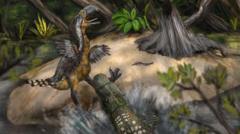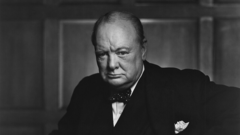At Holly’s Haven, a wildlife rescue center located in a serene part of Ottawa, the variety of animals in need of care is remarkable. Among them is Cedar, a young blind moose calf with an injured leg who cannot be returned to the wild. On a recent visit, the center was home to a coyote, porcupines, and numerous baby raccoons and skunks, but it was Cedar's presence that posed a unique project for Lynne Rowe, the center’s founder.
Cedar’s arrival has forced Rowe to quickly learn about the specific requirements of young moose. Unlike other animals that can typically be rehabilitated and released, Cedar’s circumstances are quite different. Even with proper care, he is expected to have very limited vision in his right eye, rendering him vulnerable in the wild, particularly to predators like coyotes and wolves.
Rowe attended to Cedar as he eagerly munched on willow branches, and she noted that experts in wildlife rehabilitation have strongly advised against releasing him. At only 30 kilograms now, Cedar has a potential growth weight of 700 kilograms as an adult, which adds to the complexity of his care at the center. The rescue pathway once paved for other animals won’t apply to Cedar, marking a significant shift in how such a large and vulnerable animal will be managed within the confines of Holly’s Haven.
Rowe emphasized the need for Cedar to stay protected, as his return to the wild would likely spell disaster given his special needs. Cedar’s journey underscores the adaptive measures required when caring for wildlife and the unique challenges that come with rehabilitation.



















